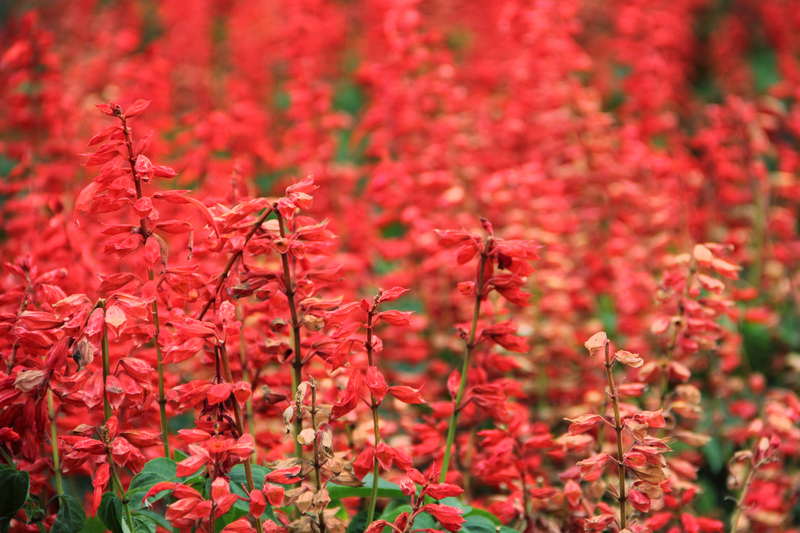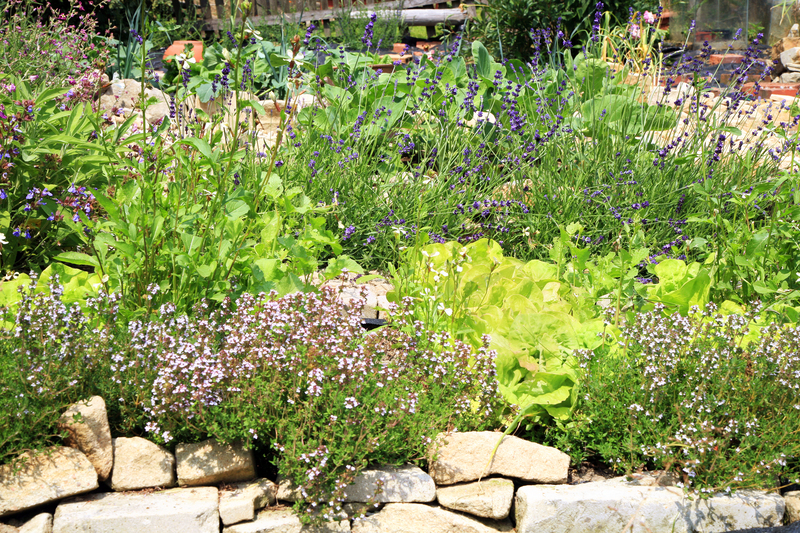Insulate Your Garden from Weather-Related Damage
Posted on 10/06/2025
Insulate Your Garden from Weather-Related Damage: Comprehensive Tips for Sustainable Gardening
Are you worried that unpredictable weather patterns are putting your beautiful garden at risk? Insulating your garden from weather-related damage is crucial for preserving plant health, sustaining yields, and protecting your hard-earned landscaping investment. In this comprehensive guide, we will explore effective methods and practical strategies for weatherproofing your garden throughout the year, ensuring it thrives no matter what Mother Nature throws your way.

Why Insulating Your Garden from Extreme Weather is Essential
Climate change, unusual weather events, and temperature fluctuations can wreak havoc on even the most resilient gardens. Insulating your garden from the elements not only protects vulnerable plants but also maintains the overall health and productivity of your green space. Whether you're dealing with scorching summers, harsh winters, or relentless storms, implementing a weather-resilient gardening plan will save time, resources, and heartache in the long run.
The Risks of Weather-Related Damage to Gardens
- Frost and Freezing Temperatures: Can cause severe tissue damage, kill seedlings, and stunt plant growth.
- Heat Waves: Lead to dehydration, sunscald, and wilting.
- Heavy Rain and Flooding: Washes away soil nutrients, erodes garden beds, and increases disease risk.
- Strong Winds: Snap stems, break branches, and uproot young plants.
- Hail Storms: Bruises leaves and fruits, making them susceptible to disease.
Understanding these risks underscores the importance of proper garden insulation to ensure long-term sustainability.
Key Techniques to Insulate Your Garden from Weather-Related Damage
Garden insulation methods can be proactive and reactive. The most successful gardeners utilize a combination of strategies tailored to their climate, soil type, and plant selection.
1. Mulching: Nature's Blanket
Mulch acts as a protective layer on your soil's surface, regulating temperature, conserving moisture, and minimizing erosion.
Benefits:
- Keeps soil cool in summer and warm in winter
- Prevents nutrient runoff during storms
- Suppresses weeds, reducing competition
- Limits soil compaction from heavy rain
Use organic mulches like wood chips, straw, shredded leaves, or compost. For best results, apply a 2-4 inch layer around your plants, avoiding direct contact with the stems.
2. Row Covers and Cold Frames
When late spring frosts or early autumn chills threaten your garden, row covers and cold frames can create microclimates that shield crops.
- Floating Row Covers: Lightweight fabric that lets in light and rain but keeps out frost and pests.
- Cold Frames: Mini, ground-level greenhouses with a transparent lid that trap heat and extend the growing season.
Invest in high-quality materials, and secure edges to prevent wind infiltration. Reusable covers are more eco-friendly and cost-effective over time.
3. Windbreaks and Shelterbelts
Insulating your garden from harsh winds is paramount, especially in exposed sites or open plains. Windbreaks reduce windspeed, minimize evaporation, and prevent soil erosion.
- Plant rows of fast-growing trees or shrubs (e.g., cedar, juniper, privet)
- Install solid or semi-permeable fencing
- Use trellises or natural barriers like evergreen hedges
A good windbreak should be positioned perpendicular to prevailing winds and extend beyond the protected area to be most effective.
4. Raised Beds for Weather Resistance
Raised beds offer exceptional drainage, prevent root rot from heavy rains, and make it easier to insulate plant roots during cold snaps. They warm up faster in spring and reduce the risk of late frosts.
- Construct using rot-resistant wood, bricks, or recycled materials
- Ensure at least 8-12 inches deep for root development
- Use quality soil mix for better insulation and nutrition
For winter, protect raised beds with straw or cover them with frost blankets.
Climate-Specific Garden Insulation Strategies
Protecting Your Garden from Winter Damage
Frost, snow, and fluctuating winter temperatures pose a significant threat to garden health. Use a combination of these tactics for the best results:
- Apply a thick mulch layer after the first hard frost to trap soil warmth and protect roots
- Cluster potted plants together near a sheltered wall for extra heat
- Install frost cloth for particularly tender species
- Wrap vulnerable shrubs with burlap or breathable garden fabric
- For perennials, cut back stems and cover crowns with leaves or compost
Avoid compacting soil with heavy foot traffic on frozen ground to maintain natural insulation.
Minimizing Summer Heat Stress
Hot spells and drought can devastate unprotected gardens. Insulate your plants with the following heat-mitigation methods:
- Shade cloth over vegetable beds to reduce UV exposure
- Add mulch to maintain soil moisture and regulate temperature
- Water deeply in the early morning or evening to reduce evaporation
- Group potted plants in shaded clusters on patios
- Install drip irrigation to ensure consistent moisture
Monitoring soil moisture during a drought is vital for insulating your garden from heat-related damage and preventing plant shock.
Dealing with Excess Rain and Flooding
Heavy rainfall and flooding not only wash away valuable nutrients but also create ideal conditions for root rot and disease.
- Elevate garden beds whenever possible
- Make use of compost and organic matter to improve soil structure and drainage
- Install French drains or rain gardens in low-lying areas
- Choose flood-tolerant plant species if you live in a high-risk zone
- Maintain healthy lawn borders to slow and filter runoff
After storms, inspect your garden for standing water and act quickly to aerate or add sand to waterlogged spots.
Choosing Weather-Resistant Plants for a Naturally Insulated Garden
Another way to protect your garden from weather damage is to select varieties bred for hardiness and adaptability. Choose plants that have proven success in your specific USDA growing zone.
Hardy Plant Recommendations
- For Cold Climates: Sedum, Russian sage, daylilies, hostas, ornamental grasses
- Heat- and Drought-Tolerant: Lavender, coneflower, yarrow, succulents, rosemary
- Flood-Tolerant Species: Red twig dogwood, Joe-Pye weed, iris, black-eyed Susan
- For Windy Areas: Boxwood, hawthorn, holly, spirea, juniper
Consult local garden centers for advice on optimal species for your region.
Smart Weatherproofing Accessories and Tools
Modern technology and innovative gardening solutions can insulate your garden from unpredictable weather events. Consider these accessories:
- Soil Moisture Sensors: Help time watering and signal drought stress
- Automatic Irrigation Controllers: Adjust to weather forecasts
- Windbreak Netting: Provides temporary wind protection for young plants
- Protective Cloche Domes: Shield seedlings from frost and pests
- Weather Apps and Alerts: Offer timely notifications for proactive protection
DIY Insulation Projects
- Repurpose old windows to create cold frames
- Construct windbreaks with natural materials like bamboo or brushwood
- Make mini greenhouses with clear plastic storage bins
- Use recycled cardboard as temporary mulch boosts when temperatures drop unexpectedly
Seasonal Maintenance for All-Year Garden Insulation
Consistent maintenance will help ensure your garden insulation strategies remain effective:
- Regularly replenish mulch and organic material
- Inspect protective covers for tears or dislodgement after storms
- Prune damaged branches that may provide entry points for frost
- Adjust windbreaks and shade structures as the sun's angle changes
- Rotate crops seasonally to minimize stress and soil depletion

Insulate Your Garden: Sustainable & Eco-Friendly Approaches
Eco-conscious gardening not only guards plants but also benefits the local ecosystem. Here are several sustainable insulation practices:
- Encourage biodiversity to promote a resilient microclimate
- Plant cover crops (like clover or vetch) in off-seasons to prevent erosion and add nutrients
- Compost garden waste to enrich soil fertility naturally
- Replace chemical fertilizers with organic mulch and amendments for safer insulation
- Use local, renewable materials for all insulation projects
Insulating Your Garden for the Future
Weather patterns are evolving, but your garden's future can be bright. Proactively adopting insulation methods is the best way to ensure that plants not only survive but flourish.
Conclusion: Reap the Rewards of a Weather-Insulated Garden
While weather extremes are increasingly common, a well-insulated garden is within everyone's reach. By leveraging mulching, row covers, windbreaks, raised beds, climate-appropriate plants, and smart tools, you can protect your garden from weather damage and enjoy healthier, more bountiful harvests year after year. Start implementing these tips today to insulate your garden against climate uncertainty and secure a thriving oasis, whatever the forecast may bring!
- Stay vigilant as the weather changes
- Adapt your strategies to each season
- Invest in sustainable, eco-friendly materials
Ready to take your gardening to the next level? Insulate your garden from weather-related damage and experience the beauty of a resilient, flourishing landscape throughout every season!

